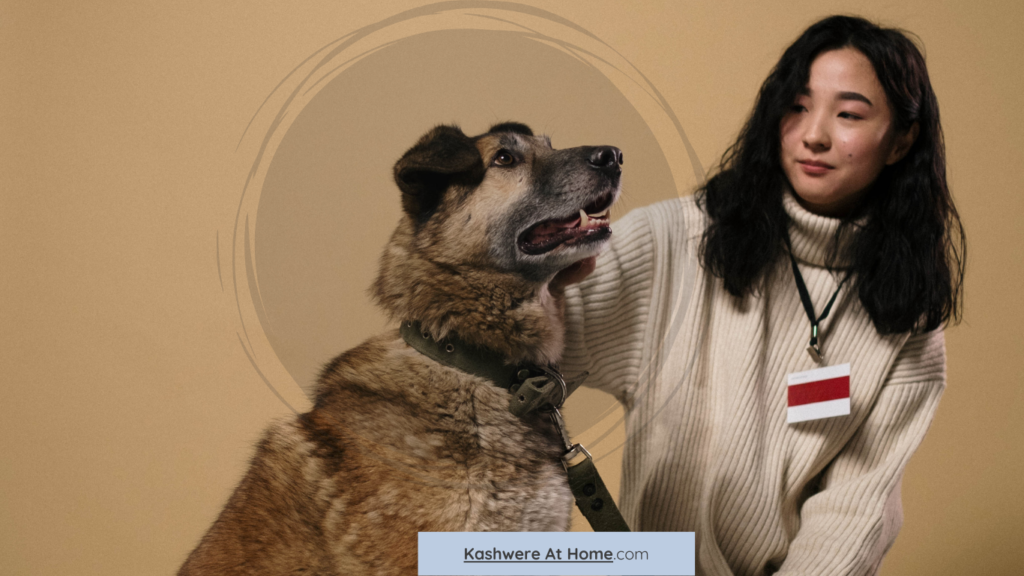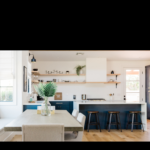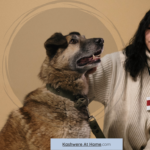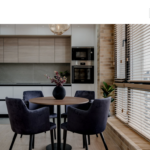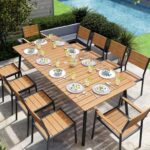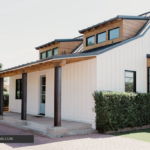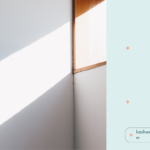Contents
- 1 Pet Friendly Home Decorating Tips
- 1.1 Introduction
- 1.2 Understanding Your Pet’s Needs and Behaviors
- 1.3 Pet-Friendly Flooring Options
- 1.4 Pet-Friendly Furniture Selection
- 1.5 Creating Pet-Specific Zones
- 1.6 Pet-Friendly Fabrics and Materials
- 1.7 Smart Storage Solutions for Pet Supplies
- 1.8 Pet-Friendly Design Tricks
- 1.9 Pet-Safe Plants and Décor
- 1.10 Technology for Pet-Friendly Homes
- 1.11 Seasonal Decorating with Pets in Mind
Pet Friendly Home Decorating Tips
Introduction
Creating a stylish home that accommodates both your design preferences and your furry friends can be a challenging balancing act. Pet Friendly Home Decorating Tips offers practical solutions for pet owners who don’t want to sacrifice style for functionality. Whether you’re dealing with shedding fur, occasional accidents,
or curious paws that seem to find their way into everything, this guide will help you create a space that’s beautiful, comfortable, and practical for all members of your household—human and animal alike. From selecting the right fabrics and flooring to clever storage solutions and pet-specific zones, these tips will transform your home into a harmonious environment where your pets can thrive without compromising your personal aesthetic.
Understanding Your Pet’s Needs and Behaviors
Before diving into specific decorating tips, it’s important to understand how your pets interact with your home environment. This knowledge will guide your decorating decisions and help you create a space that works for everyone.
Different Pets, Different Needs
Dogs, cats, birds, and small animals all have unique behaviors that affect your home design choices:
- Dogs: Need space to move, may scratch floors when excited, often bring dirt inside, and some breeds shed significantly. Larger dogs may bump into furniture or knock items off tables with their tails.
- Cats: Love to climb and perch, may scratch furniture, shed seasonally or year-round depending on breed, and are attracted to small spaces. They’re also notorious for knocking items off shelves and counters.
- Birds: Create dust from feathers and seed hulls, may chew on wooden furniture if allowed to roam, and can be messy eaters, scattering food around their cages.
- Small Animals: Rabbits, guinea pigs, and hamsters may chew on furniture legs or electrical cords if not properly supervised. They also require consideration for cage placement that balances their need for social interaction with your design aesthetic.
Pet Traffic Patterns
Observe how your pets move through your home. Most pets establish regular routes and favorite spots. Notice:
- Where they spend most of their time
- Which windows they prefer for looking outside
- Their favorite resting spots
- Areas they avoid
- Spaces where they tend to play more actively
This information will help you designate pet-friendly zones and protect areas where you want to minimize pet impact. For example, if your cat loves to perch on a particular windowsill, you might add a comfortable cushion there rather than fighting a losing battle to keep them off.
Age and Health Considerations
Your pet’s age and health status should influence your decorating choices:
- Puppies and Kittens: They’re more likely to have accidents and chew on furniture or cords. They need durable, easily cleaned surfaces and plenty of appropriate toys to redirect their energy.
- Adult Pets: Generally more settled but may still have specific needs based on breed and personality. Active breeds benefit from slip-resistant flooring and clear pathways.
- Senior Pets: May have mobility issues requiring consideration for comfortable resting spots, easy access to favorite areas, and non-slip flooring. They might also have more frequent accidents as bladder control diminishes.
- Pets with Health Issues: Conditions like arthritis might require ramps or steps to help them access favorite perches or furniture. Allergies might necessitate specific cleaning routines or material choices.
Understanding these factors will help you make smarter decorating choices that accommodate your pet’s needs while creating a beautiful home environment.
Pet-Friendly Flooring Options
Flooring is perhaps the most important element to consider when creating a pet-friendly home, as it bears the brunt of pet traffic, accidents, and wear.
Best Flooring Materials for Pet Owners
Luxury Vinyl Plank (LVP)
Key Features:
- Waterproof or water-resistant construction
- Scratch-resistant surface layer
- Realistic wood or stone appearance
- Comfortable underfoot
- Available in floating click-lock or glue-down installations
| Pros | Cons |
|---|---|
| Highly durable against scratches and dents | Can dent under very heavy furniture |
| 100% waterproof options available | Not biodegradable like natural materials |
| Warm and quiet underfoot | May fade in direct sunlight over time |
| Easy to clean and maintain | Higher-quality options can be expensive |
| Simple DIY installation possible | Some brands may emit VOCs initially |
Ceramic or Porcelain Tile
Key Features:
- Extremely hard-wearing surface
- Available in countless designs, colors, and patterns
- Can mimic natural stone or wood
- Completely waterproof
- Works well with radiant heating systems
| Pros | Cons |
|---|---|
| Nearly impossible to scratch or damage | Cold and hard underfoot without heating |
| Impervious to water and pet accidents | Grout lines require regular cleaning |
| Exceptionally long-lasting | Can be slippery when wet |
| Excellent for allergy sufferers | More difficult DIY installation |
| Easy to clean with no special products needed | Dropped items likely to break on impact |
Engineered Hardwood
Key Features:
- Real wood top layer over stable plywood core
- More stable than solid hardwood in humidity changes
- Available in many wood species and finishes
- Can be refinished (depending on wear layer thickness)
- Adds real estate value to your home
| Pros | Cons |
|---|---|
| More resistant to moisture than solid hardwood | Can still be scratched by pet nails |
| Authentic wood appearance and feel | Not fully waterproof; needs prompt cleanup |
| More stable in changing temperatures | Can be expensive, especially quality brands |
| Can potentially be refinished 1-3 times | May dent under heavy items or dropped objects |
| Adds warmth and value to your home | Requires more careful maintenance than vinyl |
Stain-Resistant Carpet
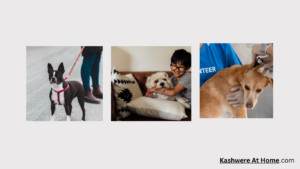
Key Features:
- Made with solution-dyed fibers for stain resistance
- Available with pet-specific warranties
- Often includes waterproof backing
- Various pile heights and textures available
- Modern options specifically designed for pet households
| Pros | Cons |
|---|---|
| Comfortable and warm for pets to rest on | Can trap pet hair requiring frequent vacuuming |
| Quieter than hard surfaces | Even stain-resistant options can be damaged by repeated accidents |
| Provides traction for older pets | May retain pet odors over time |
| Cushions falls for both pets and humans | Claws can snag looped carpets |
| Available in pet-specific varieties | Shorter lifespan than hard flooring options |
Flooring to Avoid with Pets
- Traditional Hardwood: While beautiful, it’s highly susceptible to scratches and water damage from accidents.
- Bamboo: Despite its eco-friendly appeal, most bamboo flooring scratches easily.
- Laminate: While affordable, it can be noisy, slippery for pets, and the fiberboard core swells when exposed to moisture.
- Marble or Natural Stone: Expensive, requires regular sealing, and can be etched by pet urine acids.
- High-Pile Carpet: Traps pet hair, soil, and odors, making it difficult to maintain with pets.
Smart Flooring Strategies for Pet Owners
- Mix and Match Strategically: Use the most durable options in high-traffic pet areas and save more delicate flooring for rooms with limited pet access.
- Add Area Rugs: Use washable area rugs over hard surfaces to provide comfort for pets while protecting your flooring. Look for indoor/outdoor rugs or those specifically marketed for pet households.
- Consider Flooring Transitions: Ensure transitions between different flooring types are smooth to prevent trips or injuries, especially for older pets.
- Create Designated Pet Zones: Use more durable flooring in areas where pets spend most of their time, like near feeding stations or favorite rest spots.
- Use Flooring Protectors: Place mats under food and water bowls to catch spills and splash marks.
Pet-Friendly Furniture Selection
Choosing the right furniture when you have pets can make the difference between constant frustration and peaceful coexistence. Here’s how to select pieces that stand up to furry friends while maintaining your style.
Upholstery Materials That Withstand Pet Use
Performance Fabrics
Key Features:
- Engineered specifically for durability
- Stain and moisture resistant
- Available in various textures and colors
- Often backed by extensive warranties
- Crypton, Sunbrella, and Revolution fabrics lead the market
| Pros | Cons |
|---|---|
| Extremely resistant to stains and moisture | Premium options can be expensive |
| Many are machine washable | Limited availability in some retail stores |
| Designed to release pet hair easily | Some performance fabrics have synthetic feel |
| Resist odor absorption | May require special cleaning products for tough stains |
| Available in pet-specific varieties | Colors and patterns may be more limited than standard fabrics |
Leather and Leather Alternatives
Key Features:
- Genuine leather develops patina over time
- Faux leather offers similar benefits at lower cost
- Both wipe clean easily
- Available in various finishes and colors
- Modern “performance leathers” offer enhanced durability
| Pros | Cons |
|---|---|
| Hair doesn’t cling or embed in surface | Can be scratched by pet claws |
| Most spills wipe away easily | Real leather requires occasional conditioning |
| Extremely durable with proper care | Can be punctured by sharp claws or teeth |
| Improves with age (genuine leather) | May be slippery for pets to sit on |
| No fabric fibers to trap odors | Can be cold in winter and sticky in summer |
Microfiber
Key Features:
- Tightly woven synthetic fabric
- Available in different textures and densities
- Relatively affordable option
- Often treated for stain resistance
- Easy to vacuum and clean
| Pros | Cons |
|---|---|
| Extremely durable against wear | Can hold onto pet odors if not cleaned regularly |
| Resistant to water-based stains | May show oils from pet fur more readily |
| Difficult for claws to catch and tear | Attracts and shows pet hair (especially lighter colors) |
| Relatively affordable compared to performance fabrics | Can develop worn spots with intense use |
| Easy to clean with simple soap and water | Some pets may be attracted to scratching the texture |
Canvas and Denim
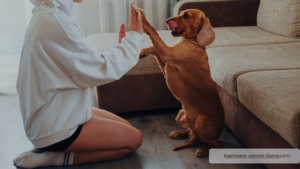
Key Features:
- Natural, durable cotton fabrics
- Typically machine washable
- Casual, relaxed appearance
- Often available in slipcover form
- Relatively affordable option
| Pros | Cons |
|---|---|
| Machine washable slipcovers available | Shows wet stains until dried |
| Very durable against wear and tear | Can shrink if washed in hot water |
| Natural fibers are eco-friendly | Takes longer to dry than synthetics |
| Tight weave resists claw snags | Colors may fade with repeated washing |
| Classic look that ages well | Not as stain-resistant as performance fabrics |
Furniture Styles and Features for Pet Owners
- Elevated Designs: Furniture with raised legs creates cleaning access underneath and reduces the accumulation of pet hair.
- Modular Pieces: Sectionals or modular furniture allow you to replace only damaged sections rather than entire pieces.
- Washable Slipcovers: Consider furniture with machine-washable covers that can be easily removed and cleaned.
- Tight Upholstery: Avoid loose cushions and pillows that can become pet magnets and require frequent fluffing.
- Hidden Storage: Ottoman storage or furniture with built-in compartments keeps pet toys organized and out of sight.
- Rounded Corners: Furniture with rounded rather than sharp corners is safer for active pets and prevents fabric tearing at vulnerable points.
- Distressed or Patterned Finishes: Wooden furniture with distressed finishes or upholstery with subtle patterns will better hide scratches and hair.
Protecting Your Furniture
- Throws and Blankets: Use washable throws on favorite pet spots that can be easily laundered.
- Pet-Specific Furniture Covers: Consider fitted furniture protectors designed specifically for pet households.
- Clear Plastic Protectors: For prized pieces, clear vinyl guards can protect corners and edges from chewing.
- Deterrent Sprays: Use pet-safe bitter sprays to discourage chewing on furniture legs.
- Double-Sided Tape: Temporarily place on surfaces you want pets to avoid (most animals dislike the sticky sensation).
Creating Pet-Specific Zones
Designating special areas for your pets not only makes them feel valued but also helps contain their impact on your home’s design and cleanliness.
Stylish Pet Bed Options
Designer Pet Beds
Key Features:
- Designed to complement home décor
- Available in various styles from modern to traditional
- Often uses furniture-grade materials
- Some convert to side tables or ottomans
- Premium fabrics and finishes
| Pros | Cons |
|---|---|
| Blends seamlessly with home décor | Significantly more expensive than standard pet beds |
| Often more durable than basic pet beds | May prioritize looks over comfort for some designs |
| Makes a style statement | May be harder to clean than utilitarian options |
| Dual functionality in some designs | Sometimes less comfortable than traditional beds |
| Often includes washable covers | May not accommodate larger pets |
Built-In Pet Nooks
Key Features:
- Custom-designed spaces specifically for pets
- Can utilize under-stair areas, cabinet conversions, or window seats
- Integrated with your home’s architecture
- Often includes comfortable bedding and storage
- Can be designed to match your home’s style
| Pros | Cons |
|---|---|
| Maximizes existing space efficiently | Usually requires professional construction |
| Creates a dedicated pet area that doesn’t intrude | Can be expensive to build custom solutions |
| Pets often feel secure in den-like spaces | Less flexible if you rearrange your home |
| Can incorporate storage for pet supplies | May be difficult to clean in tight spaces |
| Adds unique character to your home | Less portable than freestanding options |
Window Perches
Key Features:
- Allows pets (especially cats) to enjoy window views
- Available in various attachment methods
- Some include comfortable padding
- Can be mounted or freestanding
- Various sizes and weight capacities
| Pros | Cons |
|---|---|
| Satisfies pets’ desire to watch outside activity | Some require permanent installation |
| Uses vertical space efficiently | May interfere with curtains or blinds |
| Keeps pets off furniture | Some models may not support larger pets |
| Provides mental stimulation | Can be visible from outside the home |
| Some designs fold away when not in use | May leave marks on window sills |
Feeding Station Ideas
- Kitchen Cabinet Conversions: Transform a lower kitchen cabinet into a feeding station with built-in bowls and storage for food and treats.
- Furniture with Built-in Feeding Areas: Consider side tables or consoles with discrete feeding areas incorporated into the design.
- Pull-Out Drawer Feeders: Install drawer systems that can be pushed away when not in use to keep feeding areas out of sight.
- Raised Feeding Stations: Especially beneficial for larger or older dogs, these can be designed to match your kitchen or dining room furniture.
- Dedicated Pet Dining Nooks: Create a special alcove in your kitchen or utility room specifically for pet dining that includes easy-clean flooring.
Pet Play and Exercise Areas
Creating designated play zones helps contain pet activity while ensuring they get needed exercise:
- Indoor Obstacle Courses: Design furniture arrangements that create natural pathways for pets to run and play.
- Vertical Space for Cats: Install wall-mounted shelves, cat trees that match your décor, or window perches to satisfy climbing instincts.
- Hidden Toy Storage: Use decorative baskets or ottomans with storage to keep pet toys organized but accessible.
- Indoor/Outdoor Transition Spaces: Create mudrooms or entryways with built-in pet cleaning stations to minimize dirt tracked through your home.
- Exercise Equipment Integration: For very active dogs, consider how to incorporate pet treadmills or agility equipment that can be stored when not in use.
Pet-Friendly Fabrics and Materials
Beyond furniture, your home contains many textiles and materials that should stand up to pet wear and tear.
Window Treatments for Pet Households
Pet-Friendly Blinds
Key Features:
- Cordless designs for pet safety
- Durable materials like aluminum or faux wood
- Easy to clean and maintain
- Available in various light-filtering options
- Often includes pet-resistant coatings
| Pros | Cons |
|---|---|
| Cords eliminated to prevent pet entanglement | Some materials may bend if pets push through |
| Slats can be individually replaced if damaged | Horizontal surfaces can collect pet hair |
| Easy to wipe clean | May not completely block light for napping pets |
| More resistant to pet damage than fabric | Some pets may chew on lower slats |
| Available in many colors and materials | Can be noisy when pets bump into them |
Curtain Considerations
Key Features:
- Machine-washable fabrics
- Patterns that hide pet hair
- Proper length to prevent climbing
- Stain-resistant treatments
- Heavier fabrics for durability
| Pros | Cons |
|---|---|
| Can be easily removed for cleaning | Fabric may attract pet hair |
| Available in countless styles and colors | Long curtains may encourage climbing |
| Can be hung high to prevent pet access | Can absorb pet odors over time |
| Performance fabrics resist damage | May need more frequent washing |
| Can block views that cause “alarm barking” | Drawstrings can be hazardous to pets |
Area Rugs and Pet-Friendly Textiles
Indoor/Outdoor Rugs
Key Features:
- Designed for weather resistance which translates to pet resistance
- Often made from polypropylene or treated natural fibers
- Available in various patterns and colors
- Many are machine washable or hose-off cleanable
- Typically flat weave or low pile for easy cleaning
| Pros | Cons |
|---|---|
| Extremely durable against wear | Limited plushness compared to traditional rugs |
| Resists stains and moisture | Some have a more casual appearance |
| Easy to clean with soap and water | Can sometimes curl at edges over time |
| Resists odor absorption | May be less insulating on cold floors |
| Often very affordable | Some lower-quality options may fade quickly |
Washable Area Rugs
Key Features:
- Machine washable construction
- Often come in multiple pieces (cover and pad)
- Available in various sizes and designs
- Usually have non-slip backing
- Many are specifically marketed for pet homes
| Pros | Cons |
|---|---|
| Can be completely laundered | May require large capacity washer |
| Great for high-traffic or accident-prone areas | Some may shrink slightly after washing |
| Available in many styles from casual to elegant | Takes time to remove, wash, and replace |
| Replaceable when damaged beyond cleaning | Higher-quality options can be expensive |
| Many include waterproof barriers | Some styles show wear after multiple washings |
Removable Carpet Tiles
Key Features:
- Individual squares that attach to floor or each other
- Can replace single tiles if damaged
- Available in various patterns, colors, and textures
- Often includes stain-resistant treatment
- Typically low-pile for durability
| Pros | Cons |
|---|---|
| Damaged sections can be individually replaced | Seams can collect debris over time |
| Easy to remove for thorough cleaning | Limited choices compared to broadloom carpet |
| Can create custom patterns and designs | May shift slightly with active pets |
| Many feature waterproof backing | Some lower-quality options may curl at edges |
| Often more affordable than wall-to-wall carpet | Installation may require special adhesives |
Wall Coverings and Paint
- Semi-Gloss or Gloss Paint: These finishes are more resistant to stains and easier to clean than flat or eggshell finishes, making them ideal for homes with pets.
- Washable Wallpaper: Modern vinyl wallpapers can withstand cleaning and are more resistant to scratches and marks.
- Wainscoting and Beadboard: Protect lower walls from scratches and dirt with these durable wall coverings that add architectural interest.
- Tile or Stone: In areas particularly prone to splashes or dirt, consider tiled areas that are completely washable.
- Scrubbable Paints: Look for paints specifically marketed as scrubbable or washable, which can withstand repeated cleaning without color degradation.
Smart Storage Solutions for Pet Supplies
Keeping pet supplies organized and accessible while maintaining your home’s aesthetic is a key challenge for pet owners.
Stylish Pet Food Storage Pet Friendly Home Decorating Tips
Decorative Food Containers
Key Features:
- Attractive designs that complement home décor
- Airtight seals to maintain freshness
- Various sizes to accommodate different amounts
- Made from pet-safe materials
- Easy access for daily feeding
| Pros | Cons |
|---|---|
| Keeps food fresh longer than original packaging | May not hold larger quantities for big dogs |
| Blends with home décor | Some decorative options prioritize looks over functionality |
| Can be displayed openly in kitchen or pantry | Often more expensive than utilitarian containers |
| Prevents pest access | May be less durable than purely functional options |
| Often includes measuring scoops | Some materials may absorb food odors over time |
Built-In Food Storage Solutions
Key Features:
- Integrated into cabinetry or furniture
- Often includes dispensing mechanisms
- Conceals pet food from view Pet Friendly Home Decorating Tips
- Matches kitchen or utility room design
- Sometimes includes space for bowls and supplies
| Pros | Cons |
|---|---|
| Completely conceals pet food | Usually requires custom installation |
| Maximizes space efficiency | More expensive than standalone options |
| Creates a cohesive look in your kitchen | Less flexible if you change food types |
| Can include pull-out bowls and other features | May be difficult to clean in tight spaces |
| Prevents pet access to food between meals | Typically requires professional installation |
Toy Storage That Complements Your Décor
- Decorative Baskets and Bins: Choose attractive baskets that coordinate with your décor to corral pet toys in living areas.
- Repurposed Furniture: Convert vintage trunks, old drawers, or retro suitcases into charming pet toy storage.
- Ottoman Storage: Select ottomans with hidden storage compartments that serve double duty for seating and toy containment.
- Built-In Cabinets: Add dedicated toy drawers or cabinets in built-ins that match your home’s architectural style.
- Hanging Wall Storage: Install decorative wall pockets, hanging organizers, or shadow boxes that keep toys visible but contained.
Discreet Litter Box Solutions
Furniture with Hidden Litter Areas
Key Features:
- Designed to conceal litter boxes completely
- Often resembles standard furniture pieces
- Includes entry holes or doors for cat access
- May include odor control features
- Available in various furniture styles
- Pet Friendly Home Decorating Tips
| Pros | Cons |
|---|---|
| Completely hides unsightly litter boxes | Can be expensive compared to standard litter boxes |
| Helps contain odors and litter scatter | May require more space than traditional setups |
| Blends with existing furniture | Can be challenging to clean thoroughly |
| Provides privacy for shy cats | Some cats may resist enclosed spaces |
| Often includes additional storage | May not accommodate larger cats comfortably |
DIY Litter Box Concealers
Key Features:
- Repurposed furniture or cabinets
- Customized to your specific space
- Often includes ventilation modifications
- Can incorporate odor control systems
- Personalized to match your décor
| Pros | Cons |
|---|---|
| Typically more affordable than commercial options | Requires DIY skills and tools |
| Can be perfectly sized for your space | May not include professional odor control |
| Completely customizable | Time-consuming to create |
| Can utilize existing furniture | May not be as durable as commercial options |
| Satisfaction of creating a custom solution | Potential resale value concerns |
Decorative Litter Box Screens
Key Features:
- Attractive dividers or screens
- Partial concealment rather than complete enclosure
- Various designs from traditional to modern
- Often foldable or adjustable
- Allows for airflow while providing visual barrier
| Pros | Cons |
|---|---|
| More accessible for cats who dislike enclosures | Does not completely hide the litter box |
| Easier to clean than fully enclosed options | Limited odor control capabilities |
| Generally more affordable | Does not prevent litter tracking |
| Can be moved or adjusted easily | Takes up additional floor space |
| Available in many decorative styles | May be knocked over by larger or active pets |
Pet-Friendly Design Tricks
Small design adjustments can Pet Friendly Home Decorating Tips make a significant difference in creating a pet-friendly home that still reflects your personal style.
Color and Pattern Strategies
- Pet-Complementary Colors: Pet Friendly Home Decorating Tips Choose upholstery, rugs, and bedding in colors that match your pet’s fur to minimize the visibility of shedding.
- Strategic Patterns: Incorporate small to medium-scale patterns in upholstery and rugs to help camouflage pet hair and minor stains.
- Color-Blocking: Use darker colors in lower areas where pets are more likely to make contact and lighter colors above.
- Distressed and Textured Finishes: Select wood furniture with distressed or textured finishes that will better hide any scratches or marks.
- Multi-Tonal Rugs: Choose rugs with varied colors that will disguise both dirt and hair between cleanings.
Furniture Arrangement for Pet-Friendly Flow
- Clear Pathways: Arrange furniture to create clear paths for pets to navigate without squeezing through tight spaces.
- Window Access: Position furniture to allow pets access to windows for mental stimulation and sunbathing opportunities.
- Pet Traffic Management: Place more delicate items in rooms or areas with limited pet access.
- Barrier Options: Use attractive room dividers or baby gates in doorways to create pet-free zones while maintaining design continuity.
- Protected Corners: Place furniture at angles that protect Pet Friendly Home Decorating Tips wall corners from pet traffic patterns.

Odor Management Strategies
Air Purification Systems
Key Features:
- HEPA filtration captures pet dander and hair
- Carbon filters for odor absorption
- Various sizes for different room dimensions
- Quiet operation for continuous use
- Some include washable pre-filters Pet Friendly Home Decorating Tips
| Pros | Cons |
|---|---|
| Removes pet dander and allergens | Higher-quality models can be expensive |
| Helps control pet odors continuously | Requires regular filter replacement |
| Improves overall air quality | Some models can be noisy on higher settings |
| Many feature attractive designs | Uses electricity continuously |
| Some include smart features with air quality monitoring | Larger units can be visually intrusive |
Decorative Odor Control Options
Key Features:
- Attractive containers for odor-absorbing materials
- Decorative diffusers with pet-safe scents
- Stylish charcoal bag holders
- Scented candles in pet-safe formulations
- Decorative houseplants that purify air
- Pet Friendly Home Decorating Tips
| Pros | Cons |
|---|---|
| Blends with home décor | May provide less coverage than dedicated systems |
| No electricity required for many options | Requires more frequent replacement or refreshing |
| Can be placed strategically near odor sources | Some scents may be overwhelming to sensitive pets |
| Often more affordable than electronic systems | Limited effectiveness for stronger odors |
| Many use natural odor-absorbing materials | Some plants toxic to pets must be avoided |
Pet-Safe Plants and Décor
Bringing nature indoors adds life to your home, but requires careful consideration in pet households.
Pet-Safe Houseplants
- Spider Plant (Chlorophytum comosum): These air-purifying plants are non-toxic and look great in hanging baskets out of pet reach.
- Boston Fern (Nephrolepis exaltata): Lush, humidity-loving ferns are safe for cats and dogs while adding a touch of greenery.
- Areca Palm (Dypsis lutescens): This elegant palm is pet-safe and makes a striking floor plant in bright spaces.
- Prayer Plant (Maranta leuconeura): With stunning patterned leaves, these compact plants are safe for curious pets.
- African Violet (Saintpaulia): These flowering plants are non-toxic and add color to pet-friendly homes.
Plants to Avoid
- Lilies: Extremely toxic to cats, even in small amounts
- Aloe Vera: Despite its health benefits for humans, it’s toxic to pets
- Sago Palm: Highly toxic to both cats and dogs
- Philodendron: Common houseplant that can cause severe mouth irritation
- Pothos/Devil’s Ivy: Popular but toxic to pets if ingested
- Pet Friendly Home Decorating Tips
Safe Decorative Accessories
- Unbreakable Décor: Choose metal, wood, or resin decorative items rather than fragile ceramics or glass in areas accessible to pets.
- Secured Art and Photos: Use museum putty to secure frames and objects on surfaces to prevent pets from knocking them over.
- Pet-Safe Candles and Diffusers: If using scented products, ensure they contain no essential oils toxic to pets and place them out of reach.
- Stable Furniture: Select heavier or wall-anchored pieces that won’t tip if climbed on by curious pets.
- Non-Toxic Materials: Check that decorative items don’t contain lead, zinc, or other materials harmful if chewed.
Technology for Pet-Friendly Homes
Modern technology offers innovative solutions for pet owners looking to maintain a beautiful home.
Smart Home Features for Pet Owners Pet Friendly Home Decorating Tips
Automated Cleaning Systems
Key Features:
- Robot vacuums with pet-specific features
- Scheduled cleaning routines
- App control and monitoring
- Some include self-emptying bases
- Special brushes designed for pet hair
| Pros | Cons |
|---|---|
| Maintains cleanliness between deep cleanings | May struggle with excessive hair or accidents |
| Reduces visible pet hair accumulation | Requires preparation of space (removing small items) |
| Many can be scheduled around pet routines | Some pets may be frightened by robotic movement |
| Reaches under furniture where pet hair collects | Higher-end models can be expensive |
| Pet Friendly Home Decorating Tips | May require occasional rescue if stuck |
Pet Monitoring Systems
Key Features:
- Cameras with two-way communication
- Motion detection and notifications
- Some include treat dispensers
- Remote interaction capabilities
- Night vision for 24-hour monitoring
- Pet Friendly Home Decorating Tips
| Pros | Cons |
|---|---|
| Allows monitoring pets when away | Additional subscription costs for some features |
| Some allow for remote treat dispensing | Privacy concerns with connected cameras |
| Two-way audio lets you calm anxious pets | May create dependency for anxious pets |
| Can identify destructive behaviors | Some pets ignore or become frightened of devices |
| Helps identify health or behavior issues | Requires stable internet connection |
Tech-Enhanced Pet Products
- Self-Cleaning Litter Boxes: Automatic systems that reduce daily maintenance and help control odors.
- Timed Pet Feeders: Stylish automatic feeders that dispense food on schedule and blend with your decor.
- Water Fountains: Filtered water systems that encourage hydration while adding a decorative water feature.
- Smart Pet Doors: Doors that only open for your pet’s Pet Friendly Home Decorating Tips microchip or special collar tag, enhancing security.
- Climate Control Pet Beds: Heated or cooled pet beds that provide comfort while blending with your furniture.
Seasonal Decorating with Pets in Mind
Different seasons bring different decorating challenges for pet owners. Here’s how to navigate them safely.
Holiday Decorations and Pet Safety Pet Friendly Home Decorating Tips
- Secure Christmas Trees: Anchor trees to prevent tipping, consider wall-mounted half-trees, or use pet barriers.
- Pet-Safe Ornaments: Use unbreakable ornaments on lower branches and avoid tinsel, which can be dangerous if ingested.
- Flameless Candles: Opt for battery-operated candles for Hanukkah, Diwali, or other holiday celebrations.
- Elevated Décor: Place holiday villages, nativity scenes, and other small decorations on high shelves or mantels.
- Artificial Plants: Consider artificial poinsettias, lilies, and holly as the real versions are toxic to pets.
Seasonal Fabric Swaps
- Summer Lightweight Covers: Use washable cotton or Pet Friendly Home Decorating Tips linen slipcovers in summer that can be easily laundered when pets track in dirt or mud.
- Winter Texture Additions: Add machine-washable throw blankets and pillow covers in heavier fabrics during winter months.
- Seasonal Pet Beds: Swap cooling mats in summer for plush, warmer beds in winter that complement your seasonal décor.
- Outdoor-Indoor Transitions: Place seasonal mats at doorways to catch muddy paws during rainy or snowy seasons.
- Allergen Management: Consider allergen-reducing covers for spring when many pets shed winter coats.
